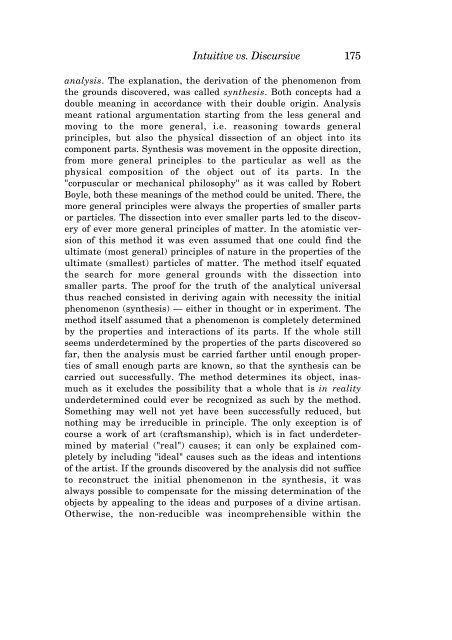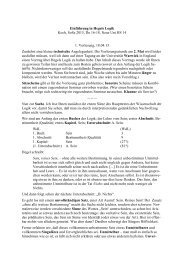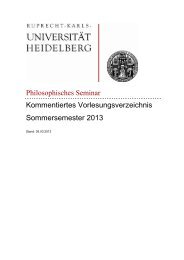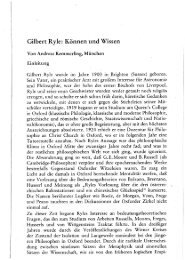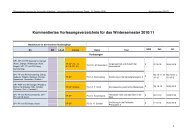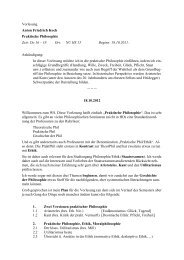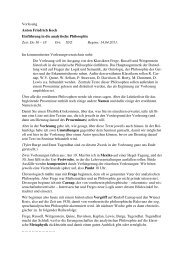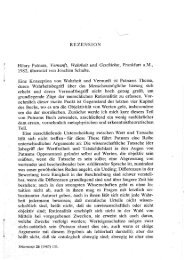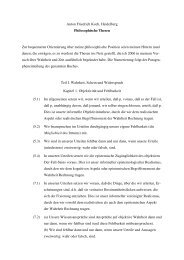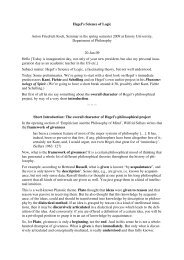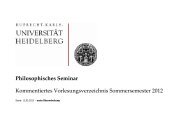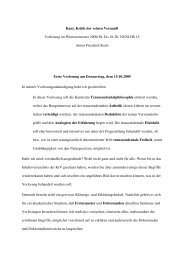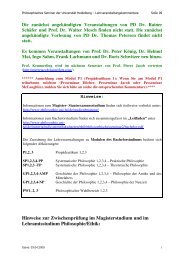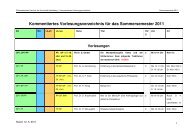KANT'S CRITIQUE OF TELEOLOGY IN BIOLOGICAL EXPLANATION
KANT'S CRITIQUE OF TELEOLOGY IN BIOLOGICAL EXPLANATION
KANT'S CRITIQUE OF TELEOLOGY IN BIOLOGICAL EXPLANATION
Create successful ePaper yourself
Turn your PDF publications into a flip-book with our unique Google optimized e-Paper software.
Intuitive vs. Discursive 175<br />
analysis. The explanation, the derivation of the phenomenon from<br />
the grounds discovered, was called synthesis. Both concepts had a<br />
double meaning in accordance with their double origin. Analysis<br />
meant rational argumentation starting from the less general and<br />
moving to the more general, i.e. reasoning towards general<br />
principles, but also the physical dissection of an object into its<br />
component parts. Synthesis was movement in the opposite direction,<br />
from more general principles to the particular as well as the<br />
physical composition of the object out of its parts. In the<br />
"corpuscular or mechanical philosophy" as it was called by Robert<br />
Boyle, both these meanings of the method could be united. There, the<br />
more general principles were always the properties of smaller parts<br />
or particles. The dissection into ever smaller parts led to the discovery<br />
of ever more general principles of matter. In the atomistic version<br />
of this method it was even assumed that one could find the<br />
ultimate (most general) principles of nature in the properties of the<br />
ultimate (smallest) particles of matter. The method itself equated<br />
the search for more general grounds with the dissection into<br />
smaller parts. The proof for the truth of the analytical universal<br />
thus reached consisted in deriving again with necessity the initial<br />
phenomenon (synthesis) — either in thought or in experiment. The<br />
method itself assumed that a phenomenon is completely determined<br />
by the properties and interactions of its parts. If the whole still<br />
seems underdetermined by the properties of the parts discovered so<br />
far, then the analysis must be carried farther until enough properties<br />
of small enough parts are known, so that the synthesis can be<br />
carried out successfully. The method determines its object, inasmuch<br />
as it excludes the possibility that a whole that is in reality<br />
underdetermined could ever be recognized as such by the method.<br />
Something may well not yet have been successfully reduced, but<br />
nothing may be irreducible in principle. The only exception is of<br />
course a work of art (craftsmanship), which is in fact underdetermined<br />
by material ("real") causes; it can only be explained completely<br />
by including "ideal" causes such as the ideas and intentions<br />
of the artist. If the grounds discovered by the analysis did not suffice<br />
to reconstruct the initial phenomenon in the synthesis, it was<br />
always possible to compensate for the missing determination of the<br />
objects by appealing to the ideas and purposes of a divine artisan.<br />
Otherwise, the non-reducible was incomprehensible within the


